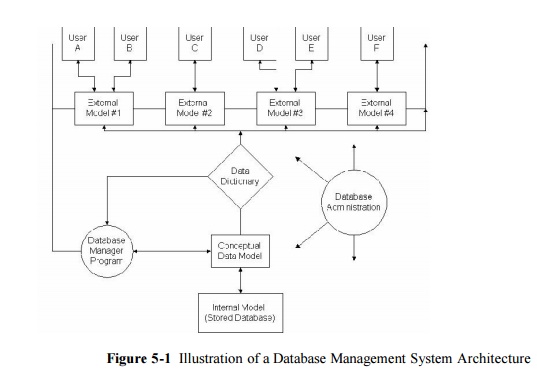Chapter: Civil : Construction Planning And Scheduling : Organization and Use of Project Information
Organizing Information in Databases

Organizing
Information in Databases
Given the bulk of information associated with
construction projects, formal organization of the information is essential so
as to avoid chaos. Virtually all major firms in the arena of project management
have computer based organization of cost accounts and other data. With the
advent of micro-computer database managers, it is possible to develop formal,
computerized databases for even small organizations and projects. In this
section, we will discuss the characteristics of such formal databases.
Equivalent organization of information for manual manipulation is possible but
tedious. Computer based information systems also have the significant advantage
of rapid retrieval for immediate use and, in most instances, lower overall
costs. For example, computerized specifications writing systems have resulted
in well documented savings. These systems have records of common specification
phrases or paragraphs which can be tailored to specific project applications.
Formally,
a database is a collection of stored operational information used by the
management and application systems of some particular enterprise. This stored
information has explicit associations or relationships depending upon the
content and definition of the stored data, and these associations may
themselves be considered to be part of the database. Figure 5-1 illustrates
some of the typical elements of a database. The internal model is the actual
location and representation of the stored data. At some level of detail, it
consists of the strings of "bits" which are stored in a computer's
memory, on the tracks of a recording disk, on a tape, or on some other storage
device.
A manager need not be concerned with the details
of data storage since this internal representation and manipulation is
regulated by the Database Manager Program (DBM). The DBM is the software
program that directs the storage, maintenance, manipulation and retrieval of
data. Users retrieve or store data by issuing specific requests to the DBM. The
objective of introducing a DBM is to free the user from the detail of exactly
how data are stored and manipulated. At the same time, many different users
with a wide variety of needs can use the same database by calling on the DBM.
Usually the DBM will be available to a user by means of a special query
language. For example, a manager might ask a DBM to report on all project tasks
which are scheduled to be underway on a particular date. The desirable properties
of a DBM include the ability to provide the user with ready access to the
stored data and to maintain the integrity and security of the data. Numerous
commercial DBM exist which provide these capabilities and can be readily
adopted to project management applications.
While the actual storage of the information in a
database will depend upon the particular machine and storage media employed, a
Conceptual Data Model exists which provides the user with an idea or abstract
representation of the data organization. (More formally, the overall
configuration of the information in the database is called the conceptual
schema.) For example, a piece of data might be viewed as a particular value
within a record of a datafile. In this conceptual model, a datafile for an
application system consists of a series of records with pre-defined variables
within each record. A record is simply a sequence of variable values, which may
be text characters or numerals. This datafile model is one of the earliest and
most important data organization structures. But other views of data
organization exist and can be exceedingly useful. The next section describes
one such general model, called the relational model.
Continuing with the elements in Figure 5-1, the data
dictionary contains the definitions of the information in the database. In some
systems, data dictionaries are limited to descriptions of the items in the
database. More general systems employ the data dictionary as the information
source for anything dealing with the database systems. It documents the design
of the database: what data are stored, how the data is related, what are the
allowable values for data items, etc. The data dictionary may also contain user
authorizations specifying who may have access to particular pieces of
information. Another important element of the data dictionary is a
specification of allowable ranges for pieces of data; by prohibiting the input
of erroneous data, the accuracy of the database improves.
External models are the means by which the users view the
database. Of all the information in the database, one particular user's view
may be just a subset of the total. A particular view may also require specific
translation or manipulation of the information in the database. For example,
the external model for a paycheck writing program might consist solely of a
list of employee names and salary totals, even if the underlying database would
include employee hours and hourly pay rates. As far as that program is
concerned, no other data exists in the database. The DBM provides a means of
translating particular external models or views into the overall data model.
Different users can view the data in quite distinct fashions, yet the data
itself can be centrally stored and need not be copied separately for each user.
External models provide the format by which any specific information needed is
retrieved. Database "users" can be human operators or other
application programs such as the paycheck writing program mentioned above.
Finally,
the Database Administrator is an individual or group charged with the
maintenance and design of the database, including approving access to the
stored information. The assignment of the database administrator should not be
taken lightly. Especially in large organizations with many users, the database
administrator is vital to the success of the database system. For small
projects, the database administrator might be an assistant project manager or even
the project manager.
Related Topics